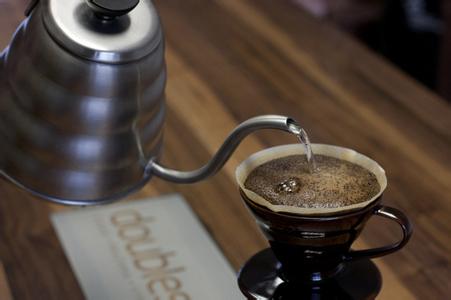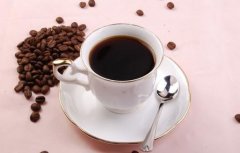Basic knowledge of boutique coffee what is caffeine?

What is caffeine?
Caffeine is a substance found in the leaves, roots and fruits of 100 plants in nature. it is also a mixture of methylxanthine. Caffeine usually comes from coffee, dimethoate and tea. Caffeine is also used in "energy drinks" and drugs to treat colds and flu.
Coffee and tea also contain theophylline, another dimethylxanthine. Theophylline has properties similar to caffeine and theobromine, but its pharmacological effects are far inferior to caffeine and theobromine. The amount of caffeine in the product is determined by the product type, the total amount of the product and the preparation method. For example, 190ml tea contains 50mg caffeine, which is lower than 75mg of the same amount of coffee. The following table lists the amount of caffeine in other drinks.
We consume an average of 3.98 milligrams per kilogram of body weight per day, for example, a person of 60 kilograms consumes 239 milligrams of caffeine per day.
What is monsoon coffee?
Monsoon coffee (rainy season Malaba) is a unique coffee from southern India using a typical air-drying process, specially stored in an open warehouse and exposed to the monsoon to increase viscosity and reduce acidity.
Monsoon coffee is stored in a special warehouse until the monsoon arrives, and the ventilation structure is designed to allow the moist monsoon to circulate between the coffee beans, so that its volume expands and shows a mellow but strong mildew smell. The monsoon process is labor-intensive: coffee is spread out in special ventilated warehouses and raked or turned by hand to allow coffee beans to absorb moisture in the moist wind. The whole process takes 12 to 16 months, in which the coffee beans expand to twice their original volume and have a dull golden yellow. Then the coffee beans that are not fully inflated are picked out with extra processing, and the rest of the coffee is to be exported.
The aroma of this dried coffee is not very strong, but with the addition of water, a combination of strongly roasted nuts (dry-roasted peanuts), caramel and tobacco come to the nostrils.
What is shadow coffee (or bird-friendly coffee)?
Shaded coffee is coffee that grows in the shade of the awning (shade is formed by local mixed trees). Traditional Arabica coffee grows in shady places in Mexico, Central America, Colombia, Peru and Venezuela and other countries of the world, including India and Indonesia, as well as many parts of Africa. Other Arabica coffee grows in sunny or near-sunny areas.
Because these shady awnings also provide habitat for migrating birds in Central America, coffee grown under local awnings is also known as "bird-friendly coffee". Most of the shadow coffee is significantly easier to adapt to the environment than the coffee grown in the sun, and the best Central American coffee grows mostly in the shade.
What is bourbon coffee?
A plant variety of Arabica coffee, bourbon coffee first appeared in Bobang Island, now Reunion Island. These delightful coffees are exported from the island of Bobang to Latin America and Africa. Some of the best Latin American coffees come from bourbon trees, which are best grown at 1000-2000 meters above sea level.
What are pea-shaped coffee beans?
Pea-shaped coffee beans (also known as Caracol) are small, round, bean-shaped fruits, usually shaped in two halves, but this bean is a whole, growing in the center of the coffee fruit. Pea coffee beans are usually separated from ordinary beans and sold as distinct coffee beans. They are popular in the Japanese market at high prices. They come from the same plants as ordinary coffee beans, but select coffee beans that are brighter, more acidic and refreshing and fragrant.
What is wet coffee?
This kind of coffee is peeled and separated from the pulp when the beans are still wet. Most of the world's most famous coffee is wet-processed to strengthen its acidity. In traditional wet processing, the coffee skins are separated and the peeled coffee beans are placed in a container so that the enzyme loosens the sticky peel or mucus (fermentation), and the loose fruit is then washed off (washed). A more modern method is to use a machine to remove the pulp or mucus.
In this way, there is still a layer around the processed coffee beans. when dried, this layer is called parchment, and the parchment outlet of the coffee beans is traded as coffee with a skin, and this layer is peeled before grinding and baking.
What are hard beans and soft beans coffee?
Hard bean coffee is coffee that grows at a relatively high altitude, while coffee grown at a lower altitude is generally considered soft bean coffee. Higher altitude and lower temperature make the fruit ripen more slowly, and form harder and less porous coffee beans. Hard bean coffee usually has higher acidity and more flavor, although sometimes there are some exceptions. The distinction between hard beans and soft beans is often used to assess the grade of coffee in Central America.
What is chicory coffee (coffee substitute)?
Chicory, an evergreen plant from Europe, was brought to North America in 1700. Fresh young leaves can be used for raw food in salads, while old leaves are bitter and can be boiled in water and eaten. But it is famous for its close relationship with coffee, which was once difficult to obtain or expensive in history. In these days, people usually roasted chicory as a substitute for coffee.
The root of chicory is long and thick, like the main root of dandelion, and when dried and roasted, it becomes an excellent substitute for coffee. There is no caffeine in chicory, which produces more roasting flavor than coffee, and many coffee producers use up to 30% of chicory to mix coffee with less caffeine.
People also use roasted acorns, yams and other local grains to make coffee.
Important Notice :
前街咖啡 FrontStreet Coffee has moved to new addredd:
FrontStreet Coffee Address: 315,Donghua East Road,GuangZhou
Tel:020 38364473
- Prev

Classification of raw coffee beans by the American Special Coffee Association
Level 1: special product defects: 0-5 do not allow to contain obvious defects total sample weight: 300 grams sample size difference: less than 5% 5% or so, or within the specified range of appreciation features: must be at least a little outstanding in the following characteristics: taste, sour taste, taste, aroma. The characteristics will be determined by both the buyer and the seller. After cup testing and appreciation, there are no defects. Baking difference
- Next

Mysterious and special oriental coffee bean "Brava" coffee
There is a kind of coffee called Bula in Xizang mountain area of our country. The mountain area here is not the ice and snow that we imagined, but a place with very little pleasant climate of Xizang. Coffee experts say the appearance and taste of the coffee here is similar to that of Kenyan AA coffee. But it is a pity that the coffee here is basically not for export, mainly for foreign guests. Another coffee producing area in China
Related
- Beginners will see the "Coffee pull flower" guide!
- What is the difference between ice blog purified milk and ordinary milk coffee?
- Why is the Philippines the largest producer of crops in Liberia?
- For coffee extraction, should the fine powder be retained?
- How does extracted espresso fill pressed powder? How much strength does it take to press the powder?
- How to make jasmine cold extract coffee? Is the jasmine + latte good?
- Will this little toy really make the coffee taste better? How does Lily Drip affect coffee extraction?
- Will the action of slapping the filter cup also affect coffee extraction?
- What's the difference between powder-to-water ratio and powder-to-liquid ratio?
- What is the Ethiopian local species? What does it have to do with Heirloom native species?

